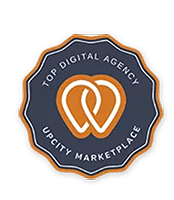
Lead Conversion Strategies and Targeted Marketing
In our first article to this series, we looked at defining lead types (cold, cool, warm, and hot), why they should be grouped into separate buckets for appropriate messaging, and how the BANT approach works to confirm that a lead is hot and ready for your sales team.
Understanding who your leads are and where they are along in their sales journey is paramount to you being able to convert them into hot leads, ready for your sales team to close. Every successful marketer must understand this sales journey well, and must be able to lead potential customers smoothly along the journey to their sales team. That’s a marketer’s job in a nut shell.
Armed with our understanding of the various types of leads, this entry to the series dives into the types of lead conversion strategies that work best for the various types of leads. Defining each lead, separating them into lead-type buckets, and then employing a conversion strategy that works specifically for that type will allow you to have firm control and organization of your leads, while also maximizing the effects of your messaging to each type.
But it isn’t simply black and white

While we are going to provide you with some of the best tactics for lead conversion strategies geared towards specific lead types, it is important to understand that nothing is completely universal. These conversion strategies should work appropriately for the respective lead type, but every business is unique, and experimenting with various marketing strategies is always a good idea.
For that reason, we will not limit ourselves to one, individual strategy per lead type, and will, instead, provide a few of the best strategies for each type that you should try experimenting with to determine which lead conversion strategies work best for your specific business. You should always be evolving your strategies, learning from past campaigns, and improving the sales journey you create for leads – being complacent will only stunt the effect of your marketing.
Cold and cool lead conversion strategies
As we said in the previous entry to this series, cold leads are those leads that have shown zero interest in your company, products or services. These are leads that you essentially try to create yourself by cold calling them. This is not something we suggest, but the goal with any cold lead is to convert them into a cool lead, and this means obtaining some form of contact information from them (signalling their interest in products or services your business offers).
The first rule here is to ‘give before you receive.’ In other words, you need to incentivize potential leads with a reward for supplying you with their info. A lead becomes cool the moment they type a relevant search word for your business into their search engine. If you sell bicycles, then the moment someone types “bicycles for sale” into their search engine, is the moment they become a cool lead for your business.

Of course, at this point, they haven’t even found your company yet, which is why a campaign that creates focused landing pages, specific to niche aspects of your business (e.g., “portable bicycles,” “mountain bikes,” “racing bikes,” etc.), will do some great work in gaining the attention of potential leads. Rather than hoping they stumble upon your website, you instead focus good SEO work towards more specific search terms and multiple pages – casting a bigger net, will yield more fish.
On these pages, you need to keep the content simple and to the point – to the point that the visitor wants to see. A landing page works because it is focused so specifically: you’re not trying to sell them your entire shop; you want to sell them exactly what they are looking for (a “portable bicycle” or “mountain bike” or…). Visiting your landing page will provide them with what they are searching for, and that is what will perk their interest in your business.
But now you need to give before you receive, and there are a few good ways to obtain the information you are looking for at this point. Offering things like training videos, a complimentary webinar, a free trial of your service, free reports, eBooks, or an interview with an expert from your company in exchange for their information work best.
Similarly, writing targeted blog articles that cover specific interests can work in the same way. Again, you give them the access to the blog article and all the information it contains, but only after they provide you with their email, for example.
The content on both landing pages and blog articles can also be recycled into social media content. With your social media content, your goal is to have every channel directing viewers to your website landing pages or blog articles where the trade for information can take place.
Additionally, any individual following your company’s social media accounts or liking posts, etc., is already (at least) a cool lead: sending them a direct message through the social media platform, suggesting they take a look at a relevant landing page or blog article (with link included in the message), will increase the results of your campaign.
As we mentioned above, we suggest trying a number of these and tracking the results to uncover which lead conversion strategies work best for your business.
Warm lead conversion strategies
Warm leads are those leads you should be spending more of your day-to-day energy on. These leads are more comfortable hearing from you, and are therefore perfect candidates for email marketing.
Just like landing pages, email marketing needs to be short and to the point – and to the point that the lead wants to hear about. This is where your lead organization will pay off most. You may have a large group of warm leads, but not all of them are necessarily interested in the same thing from you. You need to be able to track this, and then create emails that target those various interests.
At the same time, you do not want to spam your leads – this is a sure way to turn them back into cool, or worse, cold leads. A great way to ensure you avoid spamming your leads is to create time-sensitive promotional offerings. In an email, give them a set amount of time to take advantage of an enticing offer. Doing this will set an amount of time for you to let them mull over the offer and also prevent you from sending subsequent emails (spam) in the meantime. Your next email (if they haven’t taken advantage of the promotion) should be a reminder of the promotion a few days before it expires.
Sticking with our example from above, if you have a group of leads all interested in mountain bikes, then sending an email to that group, notifying them of, say, a 20% discount on mountain bikes for a limited time, is likely to have them take notice.
With the promotion, you’ve given to them, so you want to take something back as well. The goal is to turn your warm lead into a hot lead, so utilizing the BANT approach is the right move: whatever information you’re missing (Budget, Authority, Need, and Time scale) is the information you want to retrieve from them now.
Asking them to contact you for the list of available mountain bikes on promotion or for the promotional code is probably enough to gain the missing information you need. When they bite, they’re officially hot leads, and likely ones that you can immediately pass off to your sales team to close.
Again, social media can work to recycle your email content here, providing warm leads with promotions that have them contact you for access to that promotion, while filling in any missing information on them.
As a separate strategy, and one that we would employ regardless of whether you’re employing any of the above or not, is creating Pay-Per-Click Ads that target specific niche search terms for your industry (i.e., “mountain bikes,” “racing bikes,” etc.). These ads will put you directly in front of people searching those terms online – they are already warm leads when your ad is viewed! These should be connected to relevant landing pages that, again, sees your lead trade the information you require for the promotion or deal you are offering.
Before you know it, you’ll have a full funnel of warm leads turning hot…
Hot lead conversion strategies
Hopefully, everything you’ve done above has turned all of your leads hot, and hot to the point of meeting the BANT test and being passed off to your sales team. But if your hot lead is missing one (or more) of the necessary BANT aspects, then you still have a bit of work before your sales team can do their work.
Identifying which information you still require from your lead is the first move here, of course, but regardless of what you’re missing, there are a few ways you can go about extracting this. It’s always a trade, so you need to consider what to provide your lead to get that final bit of info from them.

Sometimes it isn’t what you expect. Your lead is hot, so you should have them as a subscriber to your newsletter at this point, and that provides a great opportunity to sell them on the culture and expertise of your company. Crafting a newsletter that provides insight into the passion of the people behind your business, it’s meticulous processes, it’s responsible sourcing, it’s innovations, etc. are all the pieces of news that adds both human/social and expert aspects to your company that may not be apparent in the other strategies you have been employing. It may be that extra bit that converts the lead into a purchaser.
Companies can appear as cold entities until potential customers can be introduced to those people actually running the business. Not only your expertise, but your passion and drive for what you do are dramatic selling points of your company. These can be used at any point and for any lead type, but if a lead is already hot, but hesitant, knowledge like this often provides the addition the individual requires to make a purchase.
We’ve suggested a newsletter here, which works well because it connects with the person you need to connect with, but publishing a blog article can also accomplish a similar feat. The difference is that the newsletter goes directly to your lead, whereas the blog article (unless included in a newsletter email) must be found by the user. At this stage of the game, direct is best: your lead is near the end of the sales journey, and likely only needs a helpful bump to finish the process – don’t wait for them to come to you!
We’ve outlined some of the best ways to market to your various lead types, but it is important to experiment with all of these to determine which work best for which types of leads for your particular business. At Thinkbound, we help businesses implement and execute marketing strategies that build leads and transition them through their sales funnel into customers. We’re ready with a complimentary webinar to show you how Thinkbound can help your marketing and sales teams to improve their lead conversion strategies: contact us for more information.



